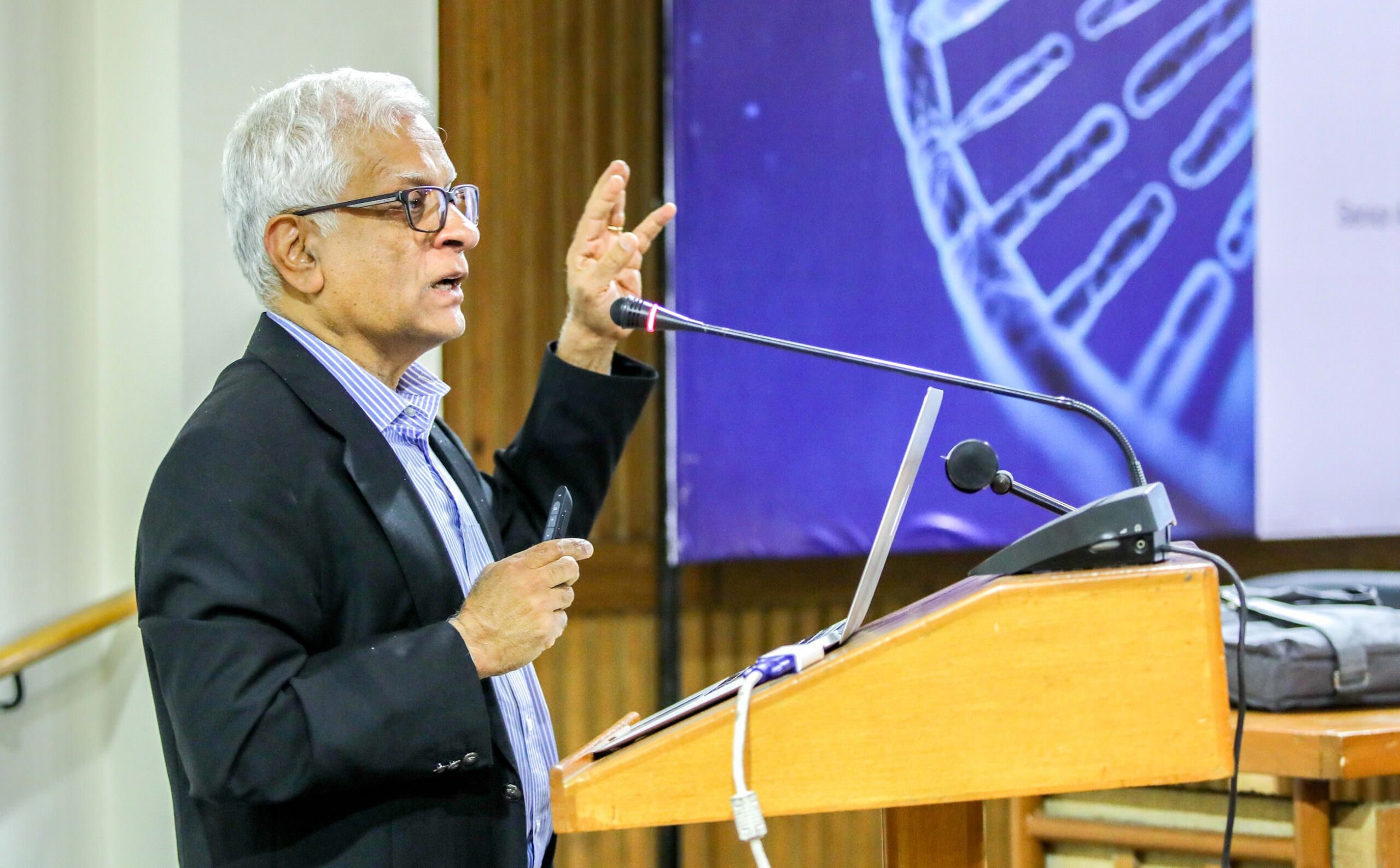
The Mittal Institute has partnered with NITI Aayog and the Office of the Principal Scientific Adviser to the Government of India to host its first Annual India Symposium, entitled Science & Society, on April 4, 2019 in New Delhi. The Symposium will bring together academics, government representatives, and industry leaders to discuss the possibilities of scientific advancement.
We caught up with Dr. Suresh Subramani, Professor of Molecular Biology at the University of California, San Diego and Global Director of the Tata Institute of Genetics and Society, to talk about the need to promote scientific literacy in India and the future of collaboration between India- and US-based scientific organizations. At the Symposium, he will be part of the panel entitled Technological Advancements in Agriculture.
We have different clusters for science in India – for biosciences, we have Bengaluru, for medical sciences, we have Delhi, and so on – but the scientific industry hardly interacts within those clusters. What is your advice to help them work together?
Focused half-day sessions can be organized once a quarter to share technical expertise and know-how in these areas. People are very likely to take the time out for such meetings if they know that substantive things will be discussed at the technological level. There needs to be a small number of people talking about these issues, and most of the time should be spent on discussion. That’s at the level of people having to communicate in a peer-to-peer way.
If it develops well, then it could be extended from one cluster to another. First, it needs to start within the cluster for proper communication to take place. And once that is successful, other clusters can be brought in.
But it is equally important to have these clusters talk to the people in lay language. For every technical discussion, a couple of discussions with the lay audience should be organized as public lectures. The Bengaluru life sciences cluster is now starting a science and society lecture where they talk about a variety of interesting topics and get the scientists to come in and describe why this is exciting and what is the potential and the future possibility — that serves the community to engage through a wider conversation. The lecture should perhaps be open to students, too, because that’s the generation we want to get excited by these things.
Both approaches play an important role, and it’s not going to happen overnight. It needs to be done year after year and maybe after five years, you will start seeing interest in this kind of thing.

Dr. Suresh Subramani discusses the future of science in India.
Even though there has been collaboration between scientific organizations of US and India in the past, what do you see as the future and scope for greater collaboration between these groups?
As good as it sounds for the general good, people are restricted in terms of their time, effort, compensation, etc. If a system does not reward this — whichever institution you’re at — people are going to lose interest in it. And I find that people who lead such efforts have to be truly passionate and dedicated. So, finding the leadership is going to be critical, and then through their energy and their enthusiasm they can bring people in. Then, there has to be a facilitating mechanism — there have to be resources provided.
I think the middle class in India has been pretty successful. Now, they are looking beyond their religion for something more impactful — they might be willing to donate to causes like these. Collecting interesting causes behind, which it allows people to rally, will be very important in pushing this through. And it doesn’t necessarily have to be just with the US. It could be the US and Europe, where there are synergies being brought together. And I would love to see … the top 10 areas where potential interaction, collaboration, [and] partnerships could transform things.
But it requires a concerted game plan, because if it is not sustained, then the ripple effect is gone. It needs serious and sustained effort to keep it going.
How do we build programs around scientific literacy so that even if students don’t want to pursue science in the future, they still learn about it freely and willingly?
My wife was a school teacher, and she said that by age 10, girls and boys are already differentiating themselves with the perception of their ability to do mathematics. So, building excitement has to start very early.
Living up to role models. If Sachin Tendulkar [an Indian cricketer] or people in cricket or football can become role models and everyone then aspires to do it, we should make role models of the greatest scientists who existed in India, who exist today. These people should be out in the forefront. Role models are important.
Secondly, it starts at home. You can’t have everything happen in the school. There has to be a forum where people come and compete in a friendly way and encourage this. Science is a curiosity-driven thing — so it has to be like playing with toys or playing a game. In fact, after being in the field for 45 years, I still think of my experiments as play and fun because I don’t know what the outcome will be. And the big part here is that the culture has become so competitive — getting into a good university, getting a good job, and so on — [that it] has taken the fun out of a lot of these things, which are more playful.
Allowing students greater flexibility and freedom to create areas of their own. Think of all the interdisciplinary things that we don’t teach in the traditional college courses. People are making a living out of that. You don’t teach entrepreneurship at the high school or college level and yet, many young kids after school are becoming entrepreneurs.
Creating ecosystems where they can go, tinker, learn, talk to experts, get role models, and essentially take a little more risk in their lives with guided mentorship would be ways to encourage this. And it has to happen in many, many places, many areas, many centers so it touches as many people as you might want to reach.
The India Annual Symposium: Science & Society is being held on April 4, 2019 at Vigyan Bhawan in New Delhi. Click here for more details.
